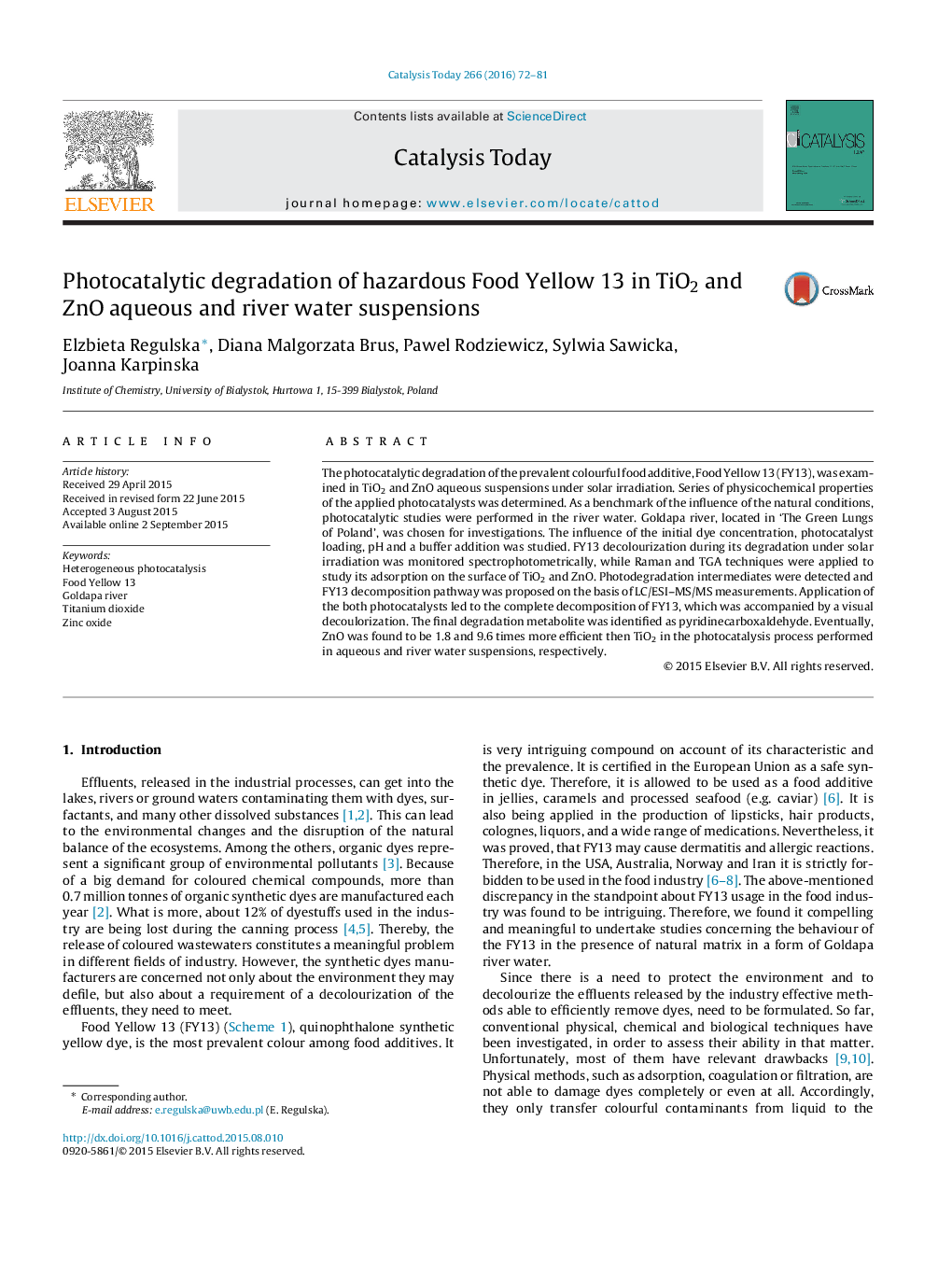| Article ID | Journal | Published Year | Pages | File Type |
|---|---|---|---|---|
| 53681 | Catalysis Today | 2016 | 10 Pages |
The photocatalytic degradation of the prevalent colourful food additive, Food Yellow 13 (FY13), was examined in TiO2 and ZnO aqueous suspensions under solar irradiation. Series of physicochemical properties of the applied photocatalysts was determined. As a benchmark of the influence of the natural conditions, photocatalytic studies were performed in the river water. Goldapa river, located in ‘The Green Lungs of Poland’, was chosen for investigations. The influence of the initial dye concentration, photocatalyst loading, pH and a buffer addition was studied. FY13 decolourization during its degradation under solar irradiation was monitored spectrophotometrically, while Raman and TGA techniques were applied to study its adsorption on the surface of TiO2 and ZnO. Photodegradation intermediates were detected and FY13 decomposition pathway was proposed on the basis of LC/ESI–MS/MS measurements. Application of the both photocatalysts led to the complete decomposition of FY13, which was accompanied by a visual decoulorization. The final degradation metabolite was identified as pyridinecarboxaldehyde. Eventually, ZnO was found to be 1.8 and 9.6 times more efficient then TiO2 in the photocatalysis process performed in aqueous and river water suspensions, respectively.
Graphical abstractFigure optionsDownload full-size imageDownload high-quality image (247 K)Download as PowerPoint slide
